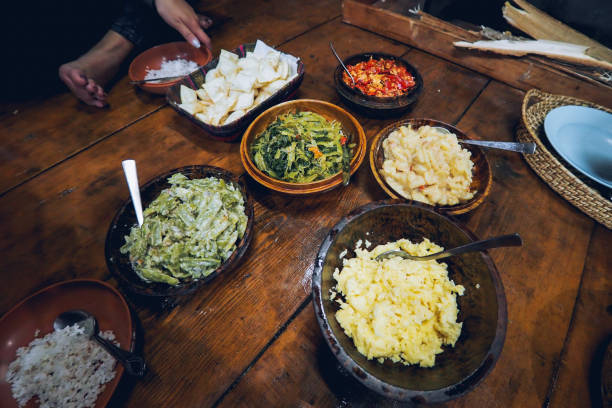Experiencing the World Through Culinary Tourism: A Delectable Journey
Culinary tourism is more than just indulging in local cuisine; it's an immersive experience that lets you taste a place's culture, history, and traditions in every bite. This travel trend has been quietly simmering on the back burner for years, but it's finally taking center stage, changing the way we explore new destinations.

The advent of culinary tourism dates back to the ancient Greeks, who traveled extensively to participate in food and wine festivals. Over the centuries, this trend has evolved, with food and beverages becoming an essential part of the tourist experience. Today, culinary tourism is a critical and vibrant part of the global tourism industry, attracting food enthusiasts worldwide to explore different cultures through their taste buds.
Culinary tourism has gained significant momentum in recent years, with travelers seeking authentic and memorable dining experiences. This new breed of tourists is knowledgeable, curious, and eager to savor local food and drink specialties. They’re also more willing to veer off the beaten path to hunt down hidden culinary gems.
A significant advantage of culinary tourism is its potential to promote sustainable practices. By highlighting local and seasonal produce, it supports local farmers and businesses, reducing the carbon footprint associated with transporting food over long distances. However, the growing popularity of this trend also poses challenges. Over-tourism in popular food destinations can strain local resources and disrupt the community’s rhythm of life.
Culinary tourism can have a profound impact on travelers. It provides a deeper understanding of the local culture, brings people together, and creates lasting memories. Food is a universal language that transcends borders and connects people, making culinary tourism a powerful tool for fostering cross-cultural understanding.
Many reputable studies have shown the positive effects of culinary tourism on local economies. It has the potential to boost income, create jobs, and promote local food and beverage industries. Food festivals, cooking classes, food tours, and farm-to-table dining experiences are just a few of the avenues through which culinary tourism can thrive.
A Gourmet’s Guide to Travel
- Seek out local food markets: They’re a treasure trove of fresh produce and unique local specialties. Plus, you’ll get to interact with locals and learn about their food culture.
- Take a cooking class: What better way to immerse yourself in a culture than by learning to cook its cuisine?
- Be adventurous: Don’t limit yourself to well-known dishes. Try regional specialties and street food for a more authentic experience.
- Respect local customs: Learn about dining etiquette and respect local customs to enhance your dining experience and show respect for the host culture.
The world of culinary tourism is vast and delectable, offering a different lens through which to experience your travels. Whether you’re sampling street food in Bangkok, learning to make pasta in Rome, or savoring wine in Bordeaux, each experience enriches your journey and leaves you with a taste for more. So, the next time you plan a trip, consider exploring through flavor. It might just change the way you travel.






